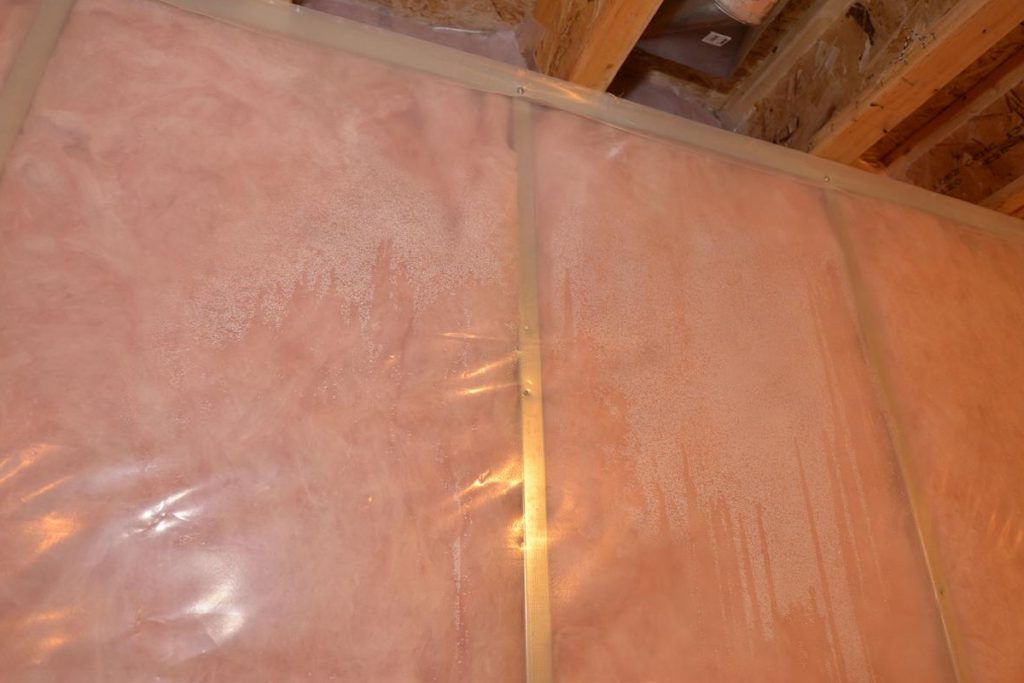Is there water inside the plastic covering your basement insulation? Do you suspect a leak in your foundation wall?
If you notice water on the inside of the ‘vapour barrier’ (the plastic barrier between the inside of your basement and the insulation) around your basement foundation walls, 99.9% of the time it is the product of condensation. This is most common with poured concrete foundation walls that are just a few years old, with condensation most prominent during the hot, humid summer months.
Why there is condensation in your basement
Condensation behind the vapour barrier is formed when the warm, moist air of your basement comes into contact with the cooler basement walls. This situation is especially common in newer homes because the concrete walls are still curing and are actively releasing moisture (the water used in the mixing of the concrete). While this may be inconvenient, it will not harm the insulation – provided you let the foundation wall dry out before finishing your basement.
How to eliminate condensation in your basement
Condensation doesn’t only develop in your basement. If you have ever taken a cold drink from inside the house to your patio during the summer you will surely have observed the process of condensation. There are 2 factors at play: the warm and moist outside air and the cold surface of your drink. By controlling these 2 factors we can virtually eliminate all condensation.
In your basement you can help speed up the drying process by using a dehumidifier to reduce the moisture content of the air; the dryer the air, the less moisture that is available to form condensation. Keep in mind that a dehumidifier dries the air around it, so if the door to the basement is left open, then there is an unlimited supply of warm moist air. Your dehumidifier will therefore, only have a limited impact. Another way to reduce the amount of warm moist air is to reduce the air temperature in the basement as warm air is able to hold more moisture than colder air.
The vapour barrier on your basement foundation walls has the role of isolating the warm, moist basement air from coming into contact with the cold foundation walls. Since the insulation is not airtight, some of the air gets past the vapour barrier; sealing the insulation with sheathing tape can help to reduce how much air comes into contact with the foundation walls.
Basement leaks and condensation
During the summer when condensation occurs the most, condensate on the basement floor is often confused with a basement leak. Both dripping condensation and a basement leak will leave a puddle on your basement floor. If you find a puddle on your basement floor you need to investigate further in order to positively determine the cause of the puddle. This is easy to do in an unfinished basement; if you cut open the insulation and see a crack, then you likely have a basement leak. If you don’t see a crack then you’re probably dealing with water resulting from condensation.
